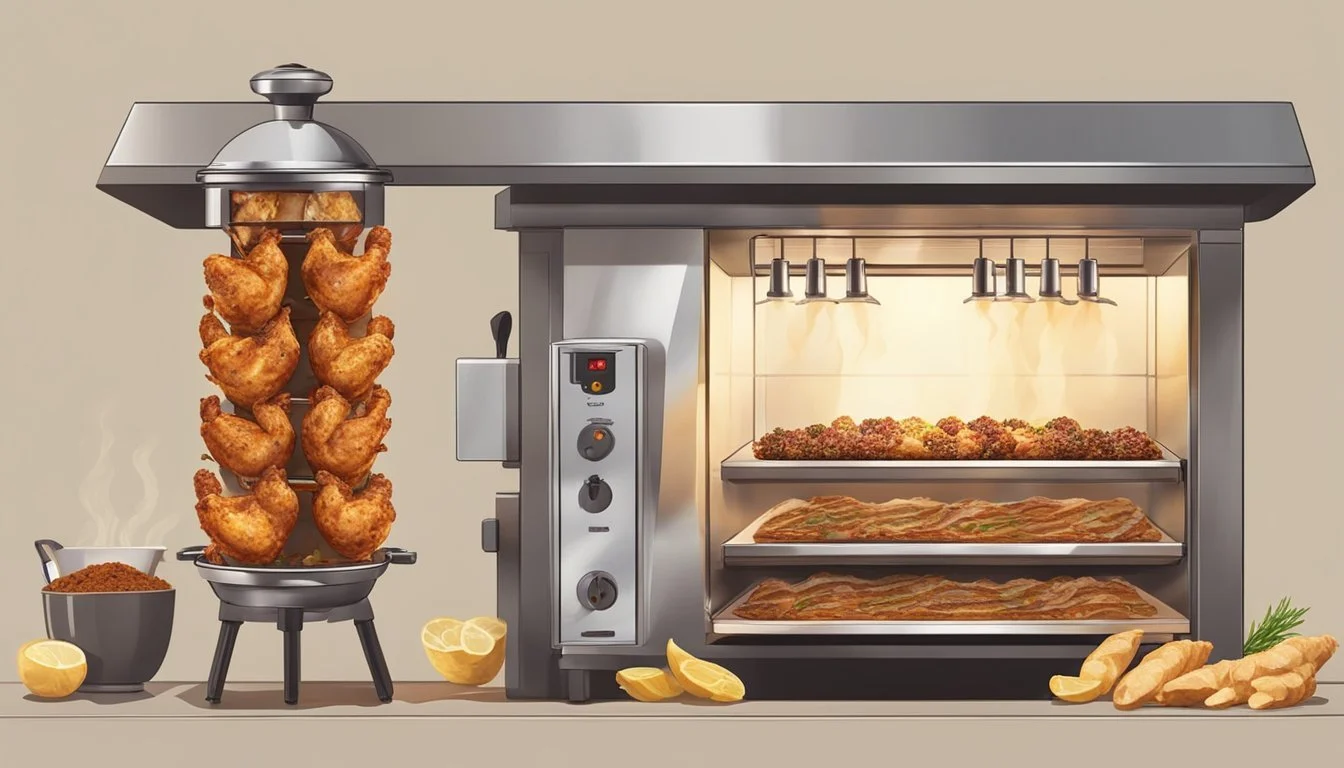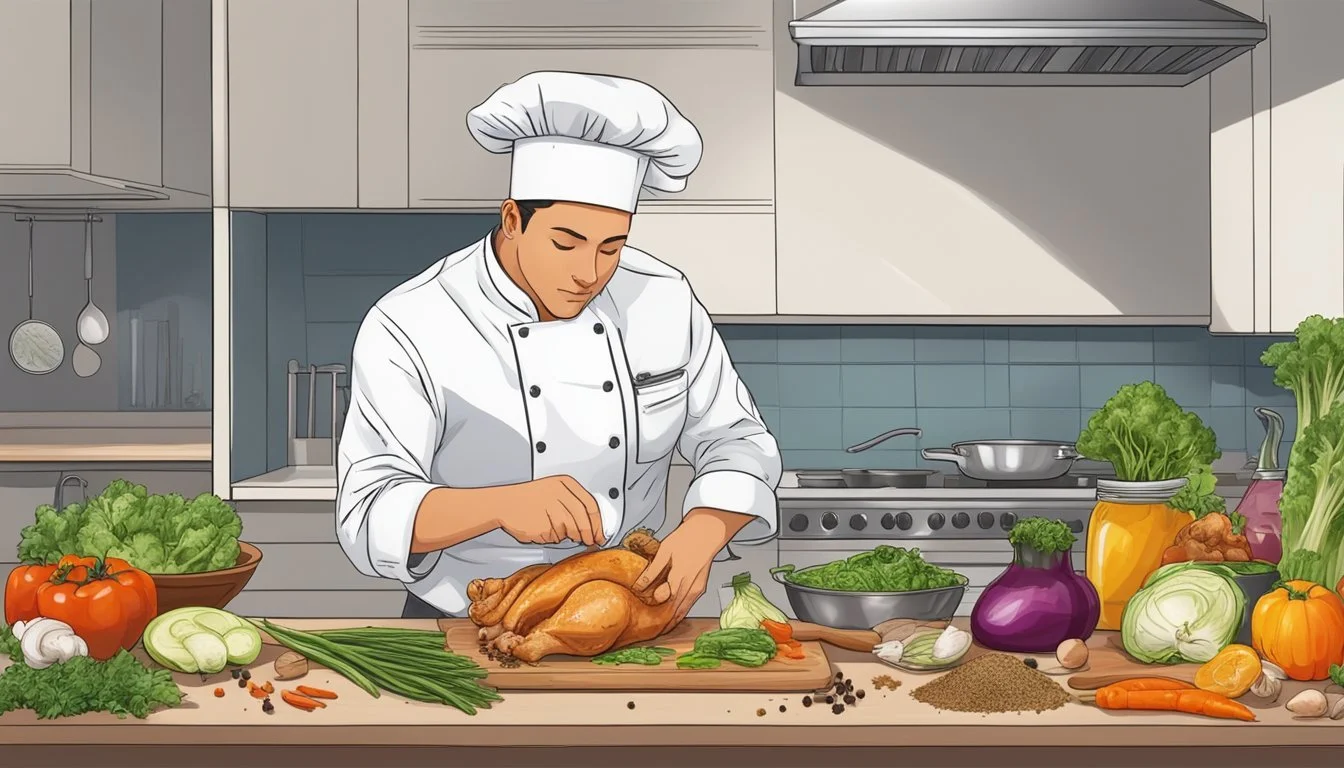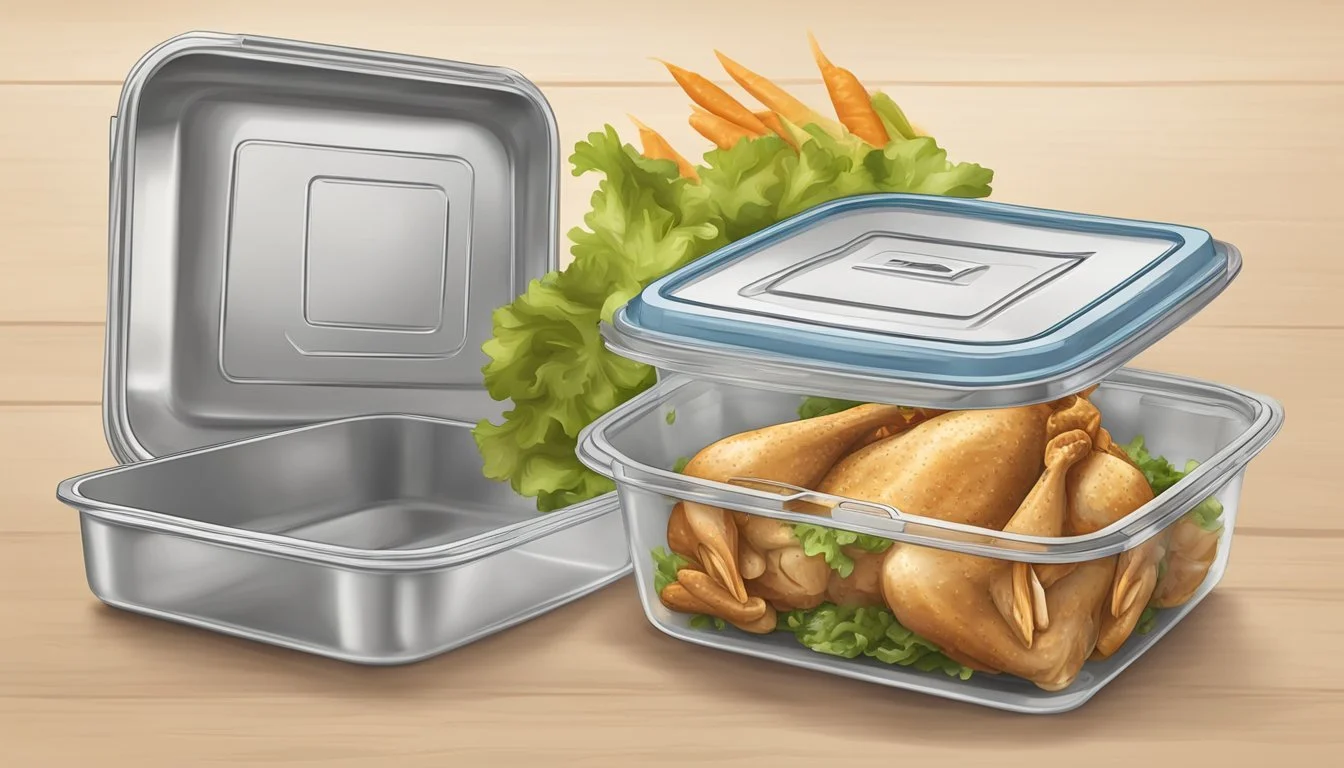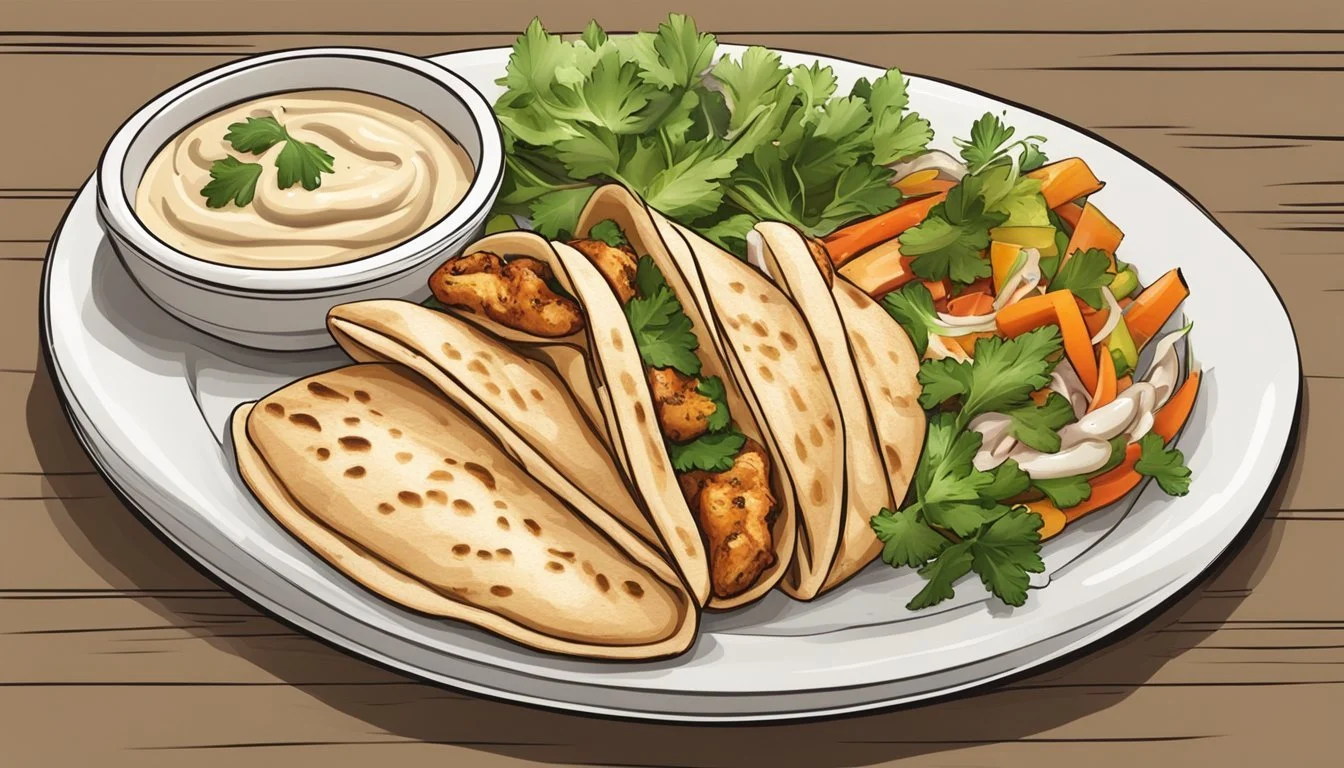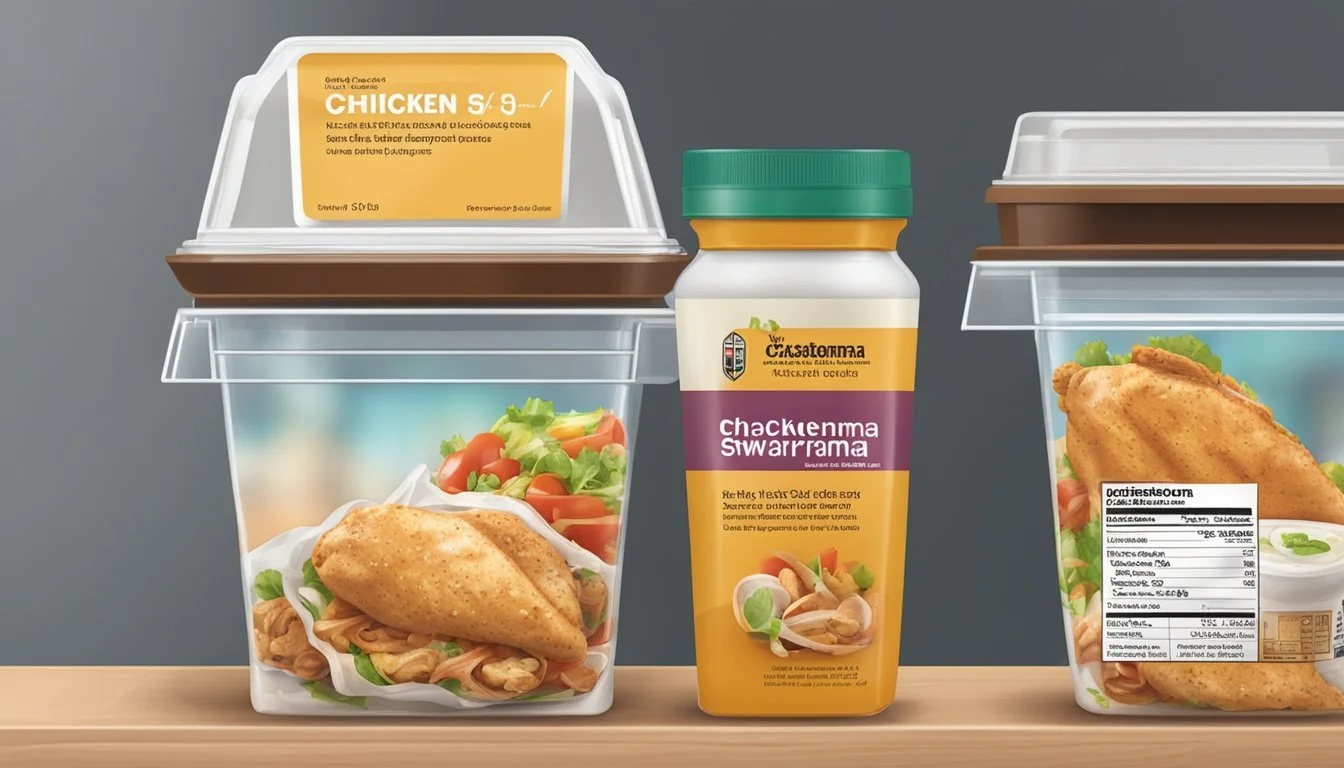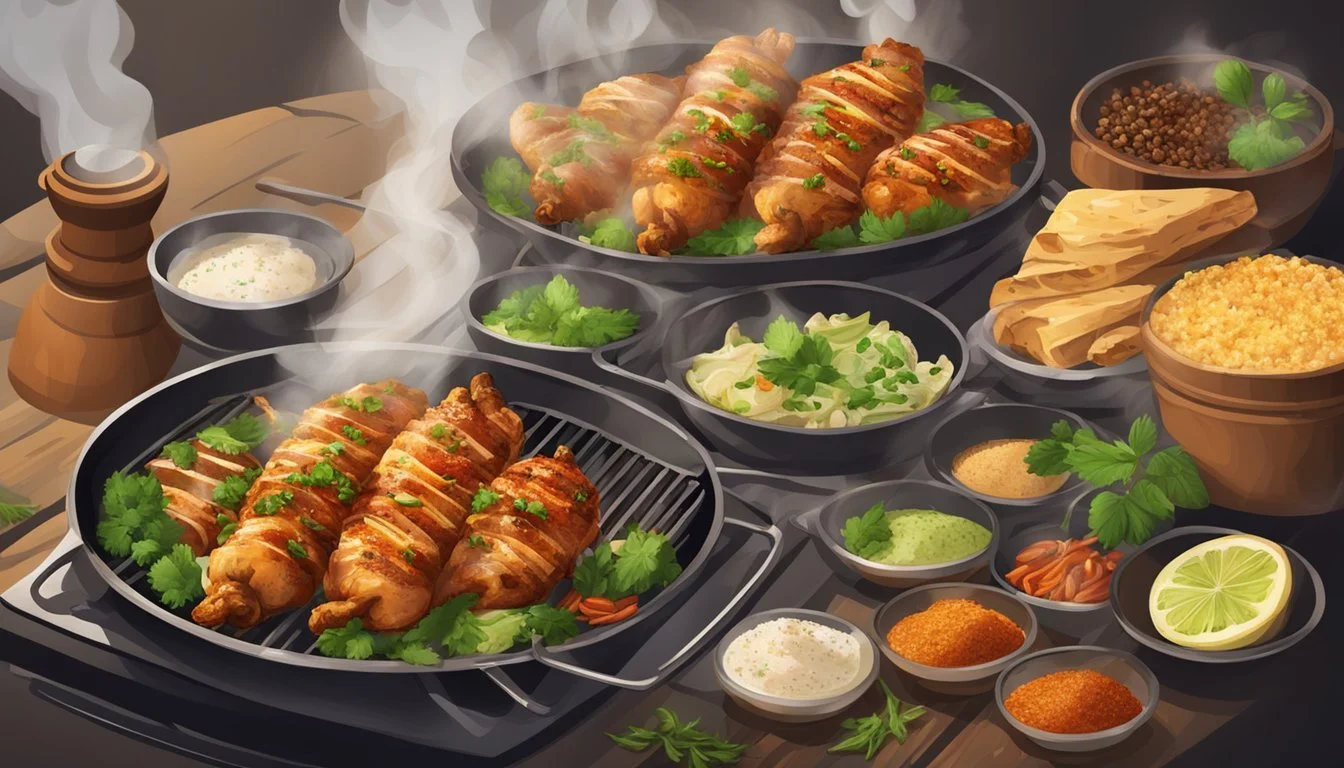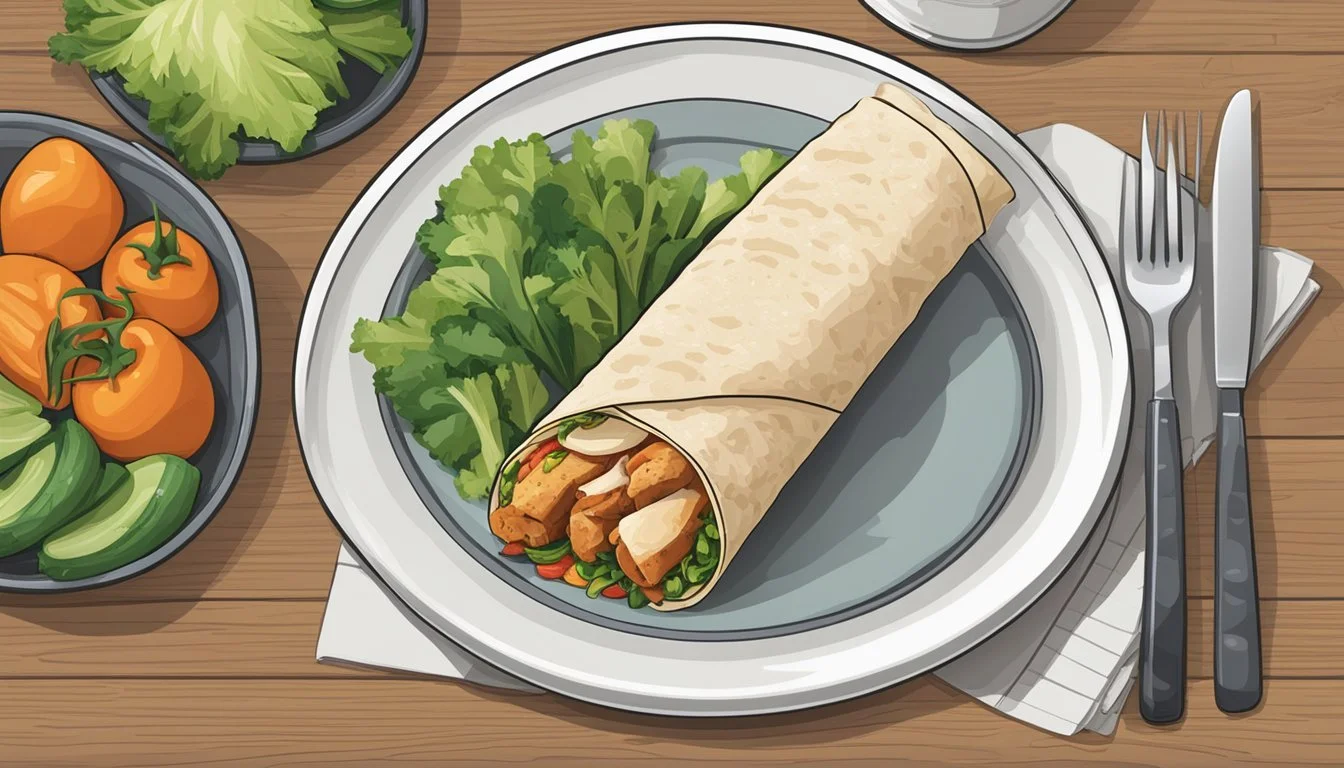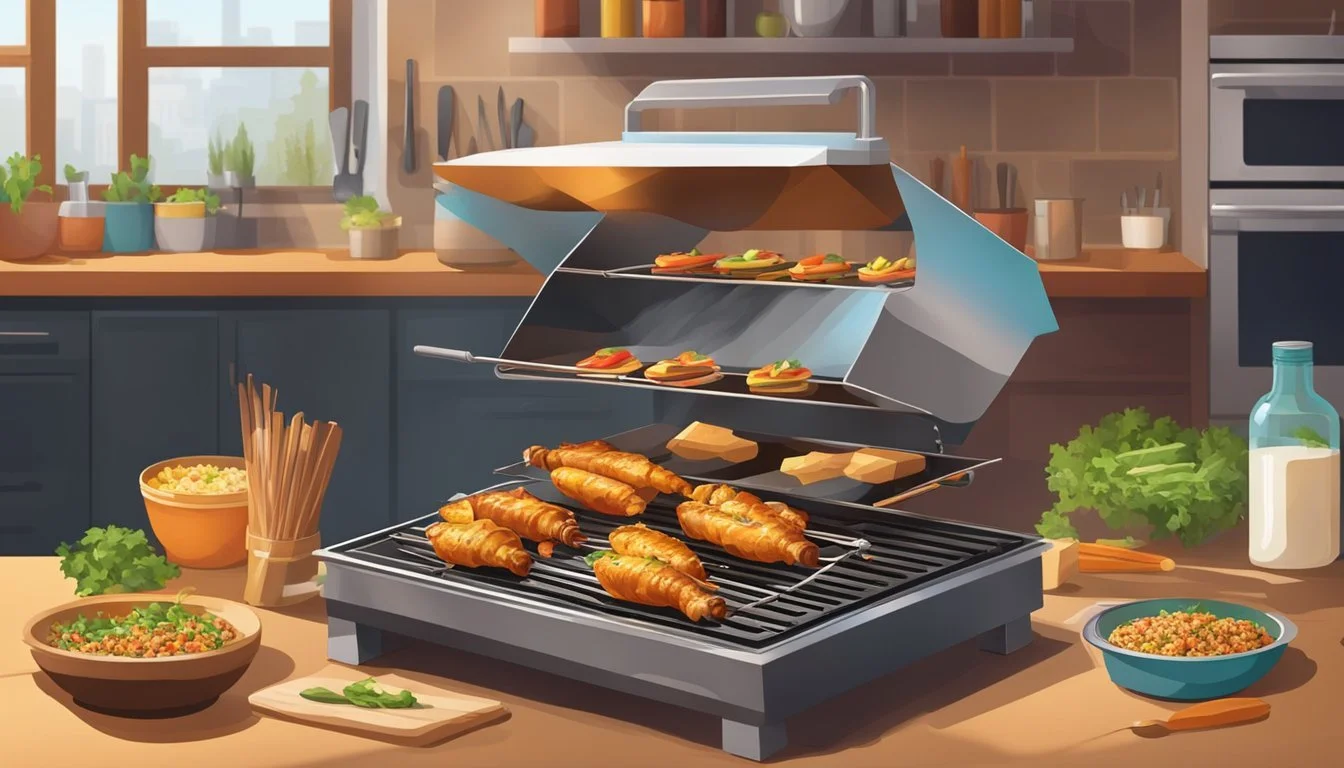How Long Does Chicken Shawarma Last?
Storage Tips and Shelf Life
Chicken Shawarma, a flavorful and aromatic Middle Eastern dish, has captivated food enthusiasts around the world. Whether you’ve prepared a batch for a family meal or have leftovers from a takeout, you might wonder about its shelf life. Properly stored chicken shawarma can last up to four days in the refrigerator, maintaining its delicious taste and texture.
For those planning to extend its life further, freezing is a viable option. When stored in an airtight container or tightly wrapped, chicken shawarma can be kept in the freezer for up to three months. This makes meal prepping with this versatile dish convenient and efficient.
Understanding storage techniques can help you safely savor your chicken shawarma for days. Ensuring it is stored correctly not only preserves its flavors but also prevents foodborne illnesses, making your dining experience enjoyable and safe.
Understanding Chicken Shawarma
Chicken Shawarma is a popular dish that originated in the Middle East. It involves marinated chicken that is either grilled or roasted and often served in flatbreads or over rice.
Ingredients
The chicken is typically marinated with a mix of spices such as cumin, turmeric, coriander, garlic powder, sweet paprika, and cloves. These spices work together to give shawarma its distinct flavor profile.
Marinade
The marinade usually includes lemon juice, olive oil, and yogurt, which help tenderize the meat. Marinating time is crucial; it can range from 1 hour to 24 hours. Longer marinade times generally yield more flavorful results.
Cooking Methods
Chicken Shawarma can be cooked in various ways. Traditional methods often involve using a rotisserie, but it can also be grilled or oven-roasted. Grilling is done over indirect high heat for about 30 minutes. Oven-roasting typically requires about 18-20 minutes at 425°F (218°C).
Serving Suggestions
It is common to serve Chicken Shawarma with sauces like tzatziki or yogurt sauce, and sides such as pickled vegetables. Shawarma can also be wrapped in pita or served on a platter with rice and salad.
Popularity
This dish has gained international popularity due to its rich flavors and versatility, making it a favorite in many households and restaurants worldwide.
Ingredients and Preparation
Preparing chicken shawarma requires meticulous attention to the marinade and the cooking process to ensure optimal flavor and tenderness.
Marinade Components
The marinade is crucial for imparting the signature flavors of chicken shawarma. Key ingredients for the marinade typically include olive oil, lemon juice, garlic, and salt. These elements both tenderize and flavor the chicken.
Spices like cumin, paprika, and turmeric are also essential. The recipe may also call for additional spices such as cinnamon and crushed red pepper, providing depth and warmth to the mixture.
The chicken should be thoroughly coated in the marinade and marinated for a minimum of 1 hour to allow the flavors to penetrate. For best results, marinate for up to 24 hours.
Building the Shawarma
Once the chicken is marinated, it's time to prepare it for cooking.
Chicken thighs are recommended due to their juiciness and flavor. They should be thinly sliced into bite-sized pieces. When ready to cook, place the chicken on a baking sheet lined with parchment paper or a similar setup.
Preheat the oven to around 400°F for even cooking.
The chicken should be evenly spread on the sheet to ensure proper roasting. An average cooking time is 20-30 minutes, ensuring the chicken reaches the desired level of char and tenderness.
Once cooked, the chicken is ready to be served in pita bread or over rice, accompanied by toppings such as yogurt sauce or tahini.
Shawarma Cooking Techniques
Chicken shawarma can be prepared using various cooking methods such as oven roasting, cooking in a skillet, and grilling. Each method has its own steps and considerations to achieve the best flavor and texture.
Oven Roasting
Oven roasting offers an effective way to cook chicken shawarma while ensuring it remains juicy and flavorful. Begin by preheating the oven to 400°F. After marinating the chicken for at least an hour or up to 24 hours, place it on a baking sheet lined with parchment paper.
Roast the chicken for about 30-40 minutes, turning it halfway through the cooking time to ensure even browning. The chicken should reach an internal temperature of 165°F. Using a rimmed baking sheet can help contain the juices, ensuring the chicken remains moist.
Skillet Method
Using a skillet to cook chicken shawarma is quick and ideal for those without access to an oven or grill. Heat a large skillet over medium-high heat and add a small amount of oil. Once the skillet is hot, add the marinated chicken pieces in batches, avoiding overcrowding.
Cook the chicken for about 5-7 minutes on each side, or until it reaches an internal temperature of 165°F. Achieve a nice sear by making sure the skillet is properly heated before adding the chicken.
Grilling
Grilling is another popular way to prepare chicken shawarma, providing a slightly smoky flavor. Preheat the grill to medium-high heat and oil the grates to prevent sticking. Place the marinated chicken on the grill, cooking each side for approximately 5-7 minutes.
To ensure even cooking, use indirect heat if the chicken pieces are thick. The chicken should be well-charred on the outside and should reach an internal temperature of 165°F. This method works well for both outdoor grills and indoor grill pans.
Proper Storage of Chicken Shawarma
To maximize the shelf life and maintain the quality of chicken shawarma, it's crucial to store it properly. Here are some guidelines for refrigeration and freezing.
Refrigeration
Chicken shawarma can be stored in the refrigerator for 3-4 days. It's important to store the leftovers in an airtight container to prevent contamination and retain moisture.
Cool down: Allow the chicken shawarma to cool to room temperature before refrigerating.
Airtight container: Place the cooled shawarma in a clean, airtight container.
Labeling: Label the container with the date it was stored to keep track of its freshness.
Using these steps ensures that the shawarma remains safe to eat and retains its flavors well.
Freezing
To extend the life of chicken shawarma, it can be stored in the freezer for up to 2-3 months. Proper packaging is essential to prevent freezer burn and preserve flavor.
Preparation: Cool the chicken shawarma to room temperature before freezing.
Packaging: Use freezer-safe, airtight containers or heavy-duty freezer bags. Remove as much air as possible before sealing.
Labeling: Clearly label the container or bag with the date.
Defrosting should be done in the refrigerator overnight to maintain the best texture and taste. This method keeps the shawarma in ideal condition for a longer period.
Serving Suggestions
Chicken shawarma pairs wonderfully with various serving styles and complementary sides. These serving methods enhance the flavors and provide a satisfying meal experience.
Wrap and Pita Pockets
Chicken shawarma can be wrapped in pita breads or flatbreads for a delicious hand-held meal. Adding tomatoes, cucumbers, and lettuce provides a refreshing crunch and balances the savory taste of the chicken.
Use sauces like tahini or tzatziki to add creaminess and tang. Greek salad components such as olives and feta cheese can also be incorporated for an extra Mediterranean touch.
Pita pockets are another great option. Stuff these with chicken shawarma, fresh vegetables, and your favorite sauce for a quick, tasty meal that's easy to assemble.
Complementary Sides
Several side dishes complement chicken shawarma effectively. Hummus serves as a flavorful dip that pairs well with both the meat and pita bread. Tzatziki sauce offers a cool, creamy contrast to the spiced chicken.
Roasted cauliflower seasoned with garlic and olive oil makes for a nutritious side. Rice pilaf infused with spices and herbs can add a hearty base to the meal.
Fresh salads featuring tomatoes, cucumbers, and feta cheese bring a crisp, tangy element that complements the bold shawarma flavors. These sides ensure a balanced and satisfying dining experience.
Shelf Life and Safety
Proper storage is essential to maximize the shelf life of chicken shawarma. When stored correctly in the refrigerator at 40°F (4°C) or below, chicken shawarma can last between 3-4 days.
If the shawarma includes chicken breasts or boneless, skinless chicken thighs, this storage time applies as well.
Food safety is crucial. Always refrigerate chicken shawarma within two hours of cooking to minimize the risk of bacterial growth. Use airtight containers or tightly wrapped aluminum foil to prevent contamination and dryness.
Labeling the date you stored the chicken shawarma can help keep track of its freshness. Expired shawarma should be discarded to prevent foodborne illnesses.
Freezing chicken shawarma can extend its shelf life up to 2-3 months. Before freezing, ensure it is cooled to room temperature and wrapped tightly to avoid freezer burn.
When reheating, make sure the shawarma reaches an internal temperature of 165°F (74°C) to ensure safety. Use a food thermometer to verify this.
Incorporating seasonings like smoked paprika and black pepper can enhance flavor but does not extend shelf life. Always prioritize safe food handling practices.
Shelf life can vary based on ingredients used, so always prioritize safety and timely consumption.
Common Variations and Substitutions
Chicken shawarma is adaptable, allowing for diverse protein choices and vegetarian alternatives. These variations can suit different dietary preferences and taste profiles.
Alternate Proteins
Chicken shawarma traditionally uses chicken, but other proteins work well too. Lamb shawarma offers a rich, savory flavor, often enhanced with similar spices like cumin and coriander. Lamb’s tenderness makes it a popular choice in many Middle Eastern dishes.
Beef shawarma is another robust option. It requires slightly different marinating times to ensure the meat remains tender. Adding olive oil and lemon juice to the marinade helps break down the proteins in beef, providing a juicy result.
Turkey is a leaner choice, which makes it a healthier alternative. Turkey requires less cooking time but benefits from a similar marinating process to chicken. Use herbs and spices generously to maintain flavor.
Vegetarian Options
Vegetarian shawarma can be just as satisfying and flavorful. Falafel is a common choice made from ground chickpeas or fava beans. It’s seasoned with garlic, parsley, and coriander, then fried until crispy.
Portobello mushrooms are also a great substitute. They have a meaty texture and absorb marinades well. Grill or roast them with shawarma spices for a delicious option.
For a tofu-based version, use extra firm tofu. Press out excess moisture and marinate it similarly to meat. Baking or grilling with oil and spices enhances its flavor, making it a suitable shawarma substitute.
Enhancing Flavors
Enhancing the flavors of chicken shawarma involves the right blend of spices and condiments.
Marination plays a crucial role. Ingredients like fresh lemon juice, paprika, and cardamom can add a depth of flavor. The acidity of lemon juice helps tenderize the meat while the spices provide a robust and aromatic profile.
Adding finely chopped red onions or onions to the marinade can introduce a subtle sweetness. These vegetables caramelize during cooking, enhancing the shawarma's overall taste.
Yogurt can be used as a base for the marinade. It not only tenderizes the chicken but also adds a creamy texture. Combining it with spices like red pepper flakes can introduce a mild heat.
For serving, a garlic sauce can elevate the shawarma. A homemade garlic sauce made with yogurt, lemon juice, and minced garlic can contribute both freshness and tanginess.
Example Marinade
1 cup yogurt
2 tablespoons fresh lemon juice
1 teaspoon paprika
1 teaspoon cardamom
1 clove garlic, minced
1/2 teaspoon red pepper flakes
1 red onion, finely chopped
Mix these ingredients and marinate the chicken for at least 3 hours.
Using these tips and ingredients ensures a flavorful and satisfying chicken shawarma experience.
Recipe and Meal Prep Tips
For anyone making chicken shawarma at home, starting with a good marinade is essential. Mix together ground spices, olive oil, lemon juice, and finely minced garlic clove to create a flavorful paste. Coat the chicken evenly and let it marinate for at least 30 minutes; longer marination times, up to 24 hours, can enhance flavor significantly.
When cooking, options include the stove, oven, or BBQ. On a stove, heat a large skillet over medium-high heat with some olive oil. Cook the chicken for about 4-5 minutes per side until charred and cooked through.
In the oven, preheat to 400°F and bake the marinated chicken on a lined baking sheet for about 20 minutes. For an added touch, switch to broil in the last 1-2 minutes for a crispy finish. If using a BBQ, lightly brush the hotplate with oil and cook similarly to the stove method.
For meal prep, chicken shawarma is versatile and can be paired with various sides. Consider serving it with pita bread, a fresh salad, or over a bed of rice. Ensure the cooked chicken cools completely before storing in air-tight containers.
Storage Tip:
Refrigerator: Store in an air-tight container for up to 4 days.
Freezer: Can be frozen for up to 3 months. Defrost in the refrigerator before reheating.
Adding chopped fresh parsley before serving can enhance both the taste and presentation.
Authentic Shawarma Experience
Discovering the authentic shawarma experience requires understanding Middle Eastern street food traditions and acquiring tips for achieving truly authentic flavors.
Middle Eastern Street Food Traditions
In the bustling streets of Middle Eastern cities, shawarma stands as a culinary icon. Vendors typically marinate chicken in yogurt and a blend of spices before slow-cooking the meat on a vertical rotisserie, similar to the doner kebab method. The meat's slow-roasting process ensures it's juicy and tender.
Served in warm pita bread or flatbreads, shawarma often comes with toppings like pickles, tomatoes, and tahini sauce. The flavors are robust, offering a harmonious blend of spices, tangy yogurt, and fresh herbs. Experiencing shawarma in its traditional street setting captures the essence of Middle Eastern cuisine, offering an immersive food journey.
Cookbook and Authentic Flavor Tips
When attempting to recreate authentic chicken shawarma at home, specific cookbook tips can enhance the flavor authenticity. Marinating the chicken for several hours using a mix of spices such as cumin, coriander, paprika, and turmeric, combined with yogurt and lemon juice, is crucial.
Cooking methods vary; some recipes recommend baking in a preheated oven at 400°F, while others suggest grilling over medium-high heat. Both methods work well if the meat is marinated thoroughly. For a true Middle Eastern flavor, consider serving the shawarma with traditional sauces and toppings like garlic sauce, hummus, or pickled vegetables.
Detailed and careful preparation is key to capturing the genuine taste of shawarma, creating a culinary experience reminiscent of Middle Eastern street markets.
Customization and Personal Touches
Chicken shawarma offers a versatile base that can be tailored to individual preferences, making each meal uniquely delicious. The choice of sauces, condiments, garnishes, and toppings allows for endless combinations, ensuring a delightful culinary experience every time.
Sauce and Condiment Selection
Selecting the right sauce is crucial for enhancing the flavor of chicken shawarma. Tzatziki sauce, with its creamy texture and hints of garlic, cucumber, and mint, is a popular choice. Made with Greek yogurt, it adds a refreshing touch to the dish.
For those who prefer a tangy profile, tahini sauce provides a rich blend of sesame seeds, lemon juice, and garlic. This sauce pairs well with the savory notes of the shawarma.
Garlic sauce, often made with extra virgin olive oil and lemon juice, brings a pungent kick that complements the spices in the chicken. Combining sauces can also create a multilayered flavor experience.
Other options include hot sauce for those who like a bit of heat or a drizzle of extra virgin olive oil to add a subtle richness.
Garnishes and Toppings
Garnishes and toppings add texture and color to chicken shawarma, elevating both flavor and presentation. Fresh parsley and mint can be sprinkled on top to add brightness and a burst of herbal aroma.
Pickles are a traditional addition, offering a crisp, tangy contrast to the tender chicken. Thinly sliced cucumbers and tomatoes provide a refreshing bite and balance the richness of the meat.
For a Mediterranean twist, crumbled feta cheese can be added for its creamy and slightly salty profile.
Other toppings include pickled onions, adding both sweetness and acidity, and shredded lettuce for an added crunch. These elements allow each person to customize their shawarma to their liking, making the dish versatile and satisfying.
Food Pairings and Serving Occasions
Chicken shawarma is a versatile dish that fits well into various dining situations. Its bold flavors complement numerous side dishes and beverages, enhancing the overall meal experience.
Common Side Dishes:
Hummus: A creamy chickpea dip with tahini, garlic, and lemon juice pairs wonderfully with chicken shawarma wraps.
Tabouli: This fresh salad, made with bulgur wheat, parsley, tomatoes, and onions, adds a refreshing contrast.
Rice Pilaf: Fluffy and aromatic, rice pilaf makes a great accompaniment.
Popular Sauces and Condiments:
Garlic Yogurt Sauce: Its cooling elements balance the spices in shawarma.
Mint Yogurt Sauce: A mix of mint leaves, Greek yogurt, salt, and garlic powder adds a tangy twist.
Tahini Sauce: Nutty and smooth, this sesame-based sauce is a classic option.
Serving Ideas:
Chicken Shawarma Wrap: Perfect for casual meals or on-the-go lunches.
Plated with Sides: Ideal for more formal dining settings.
Buffet Style: Suitable for gatherings where guests can create their own plates.
Suitable Occasions:
Family Dinners: Serve chicken shawarma with multiple side options for a balanced meal.
Picnics: Shawarma wraps and portable sides make for an easy outdoor meal.
Parties: Arrange a shawarma bar with various condiments and sides for self-service.
By mixing and matching these elements, chicken shawarma can be a centerpiece for many culinary occasions. The variety of pairings ensures a satisfying experience for all.
Health Considerations and Nutritional Information
Chicken shawarma can be a nutritious and flavorful dish. It is a good source of protein, which is essential for muscle repair and growth. A typical serving contains about 300-400 calories, though this can vary depending on the recipe and portion size.
The primary ingredients include marinated chicken, spices, and sometimes additional sauces or condiments. These ingredients contribute to its nutritional value. For instance, the spices used can offer antioxidant benefits.
Calories and Macronutrients
Nutrient Amount per Serving (approx.) Calories 300-400 Protein 20-25 grams Fat 10-20 grams Carbohydrates 30-40 grams
Healthy Fats
Chicken shawarma can include healthy fats, especially if prepared with ingredients like olive oil or tahini sauce. These fats can be beneficial for heart health.
Diet-Friendly Options
For those with dietary restrictions, chicken shawarma can be adjusted. Using whole wheat wraps or pita bread can add fiber. Gluten-free versions can be created by using gluten-free bread options.
Tips for a Healthier Shawarma
Choose lean chicken cuts.
Opt for low-fat or light sauces.
Add plenty of vegetables like lettuce, tomatoes, and cucumbers to increase fiber intake.
Monitor portion sizes to manage calorie intake effectively.
Food Preservation Techniques and Tips
To maintain the freshness of chicken shawarma and extend its longevity, proper preservation techniques are essential.
Freezing
Freezing is one of the best methods for preserving chicken shawarma. Place the shawarma in an airtight container or freezer bag. Label it with the date. This method can keep the shawarma fresh for up to 3 months.
Refrigeration
Store the chicken shawarma in the refrigerator at 40°F (4°C) or less. For best results, use within 3-4 days.
Vacuum Sealing
Vacuum sealing removes air, reducing oxidation and freezer burn. This method can significantly extend the shelf life of your chicken shawarma when combined with freezing.
Marination
Using ingredients like kosher salt, garlic powder, and cayenne can help preserve the chicken. These seasonings add flavor and act as preservatives by inhibiting bacterial growth.
Leftover Management
Reheat leftovers safely by using a microwave (2-3 minutes on high) or an oven at 350°F for about 10-15 minutes. An air fryer can be used for 5-7 minutes at 350°F, ensuring the internal temperature reaches 165°F.
Employing these tips will help retain the quality and safety of chicken shawarma, offering delicious and safe-to-eat meals even after several days or weeks.
Shawarma Equipment and Cooking Tools
Making chicken shawarma at home requires some essential equipment and tools to ensure a smooth cooking process.
A mixing bowl is necessary for marinating the chicken. Use a non-reactive bowl like glass or stainless steel to combine the spices, olive oil, and lemon juice.
An oven is useful for cooking the shawarma. Preheat it to around 400-425°F, depending on the recipe. For oven-roasted chicken shawarma, cook until the internal temperature reaches 165°F.
A sheet pan lined with parchment paper helps evenly roast the chicken and makes cleanup easier. Turn the chicken halfway through to ensure even cooking on all sides.
Sharp knives are essential for slicing the chicken into thin pieces after cooking. Thin slices ensure an authentic shawarma texture and taste.
For those who prefer grilling, a grill or BBQ can be used. Lightly brush the grill with oil to prevent sticking and cook the chicken until nicely charred.
Tongs are helpful for turning the chicken during cooking and for removing it from the grill or oven safely.
Having a thermometer on hand ensures the chicken reaches the right internal temperature, which is crucial for both safety and flavor.
Serving utensils like spoons and forks help in assembling the shawarma, whether you serve it in pita, over rice, or in a salad.
Using these tools and equipment makes the process of cooking chicken shawarma efficient and enjoyable.


